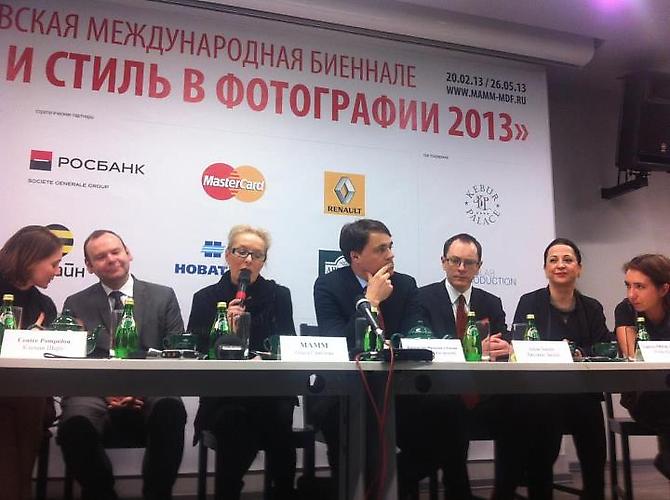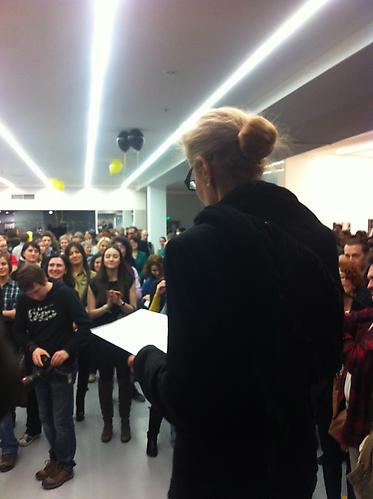AUGUST SANDER – Portrait I Landscape I Architecture at Multimedia Art Museum, Moscow
PORTRAIT | LANDSCAPE | ARCHITECTURE
MULTIMEDIA ART MUSEUM, MOSCOW
August Sander
February 21st – May 19th, 2013
‘Photography is by nature a documentary art,’ Sander declared in 1931 during one of his radio lectures, voicing the artistic credo to which he remained faithful all his life. Sander owes his fame and status as a master of photography to the vast series of portraits begun at the very outset of his career. The German photographer’s portraits are full-face and typically quite uncompromising shots with carefully considered composition, where nothing is intended for effect or spectacle. Sander was able to capture the individuality and character traits of his subjects, while openly demonstrating that they belonged to a specific social group. Consequently his photographs are a representative slice of interwar German society and also a fascinating historical document, rather than merely a collection of portraits.
In the early 1920s August Sander spent much of his time with the artists of the German avant-garde and in particular Otto Dix, who became one of his closest friends. The money earned from commercial commissions allowed Sander to work in his spare time on a grandiose documentary project entitled ‘People of the 20th Century’, aimed at compiling a typology of contemporary Germans and devising a social portrait of his epoch. Subjects for these images were selected from his acquaintances and customers.
Since Sander could not conceive of humanity separately from the environment, he conducted an active study of fauna and worked on a topographical description of German territories in parallel to the portrait photography. In 1933 the photographer began producing thematic albums dedicated to various regions in Germany, including the Rhine valley. Although August Sander never achieved widespread recognition as a topographer, he can rightly be considered the forerunner of modern landscape and architectural photography.
Sander’s creative style, his methodical approach, objectivity and specific method of working on photographic series greatly influenced luminaries such as Walker Evans, Irving Penn, Diane Arbus, Robert Frank, Bernd and Hilla Becher, Thomas Ruff, Thomas Struth and Andreas Gursky.
This exhibition was conceived by the photographer’s grandson Gerd Sander whose work is continued now by Julian Sander, the great grandson of August Sander. The exhibition is organised in collaboration with the Galerie Priska Pasquer (Cologne) and is curated by Julian Sander.
When asked in November 1927 what prompted him to create ‘People of the 20th Century’, August Sander wrote: ‘Look, observe and think’. These three words were engraved on Gerd Sander’s heart from childhood, and like his father before him, he is devoted to preserving, describing and popularising his grandfather’s artistic legacy.
‘Photography is by nature a documentary art,’ Sander declared in 1931 during one of his radio lectures, voicing the artistic credo to which he remained faithful all his life. Sander owes his fame and status as a master of photography to the vast series of portraits begun at the very outset of his career. The German photographer’s portraits are full-face and typically quite uncompromising shots with carefully considered composition, where nothing is intended for effect or spectacle. Sander was able to capture the individuality and character traits of his subjects, while openly demonstrating that they belonged to a specific social group. Consequently his photographs are a representative slice of interwar German society and also a fascinating historical document, rather than merely a collection of portraits.
In the early 1920s August Sander spent much of his time with the artists of the German avant-garde and in particular Otto Dix, who became one of his closest friends. The money earned from commercial commissions allowed Sander to work in his spare time on a grandiose documentary project entitled ‘People of the 20th Century’, aimed at compiling a typology of contemporary Germans and devising a social portrait of his epoch. Subjects for these images were selected from his acquaintances and customers.
Since Sander could not conceive of humanity separately from the environment, he conducted an active study of fauna and worked on a topographical description of German territories in parallel to the portrait photography. In 1933 the photographer began producing thematic albums dedicated to various regions in Germany, including the Rhine valley. Although August Sander never achieved widespread recognition as a topographer, he can rightly be considered the forerunner of modern landscape and architectural photography.
Sander’s creative style, his methodical approach, objectivity and specific method of working on photographic series greatly influenced luminaries such as Walker Evans, Irving Penn, Diane Arbus, Robert Frank, Bernd and Hilla Becher, Thomas Ruff, Thomas Struth and Andreas Gursky.
This exhibition was conceived by the photographer’s grandson Gerd Sander whose work is continued now by Julian Sander, the great grandson of August Sander. The exhibition is organised in collaboration with the Galerie Priska Pasquer (Cologne) and is curated by Julian Sander.
When asked in November 1927 what prompted him to create ‘People of the 20th Century’, August Sander wrote: ‘Look, observe and think’. These three words were engraved on Gerd Sander’s heart from childhood, and like his father before him, he is devoted to preserving, describing and popularising his grandfather’s artistic legacy.
























